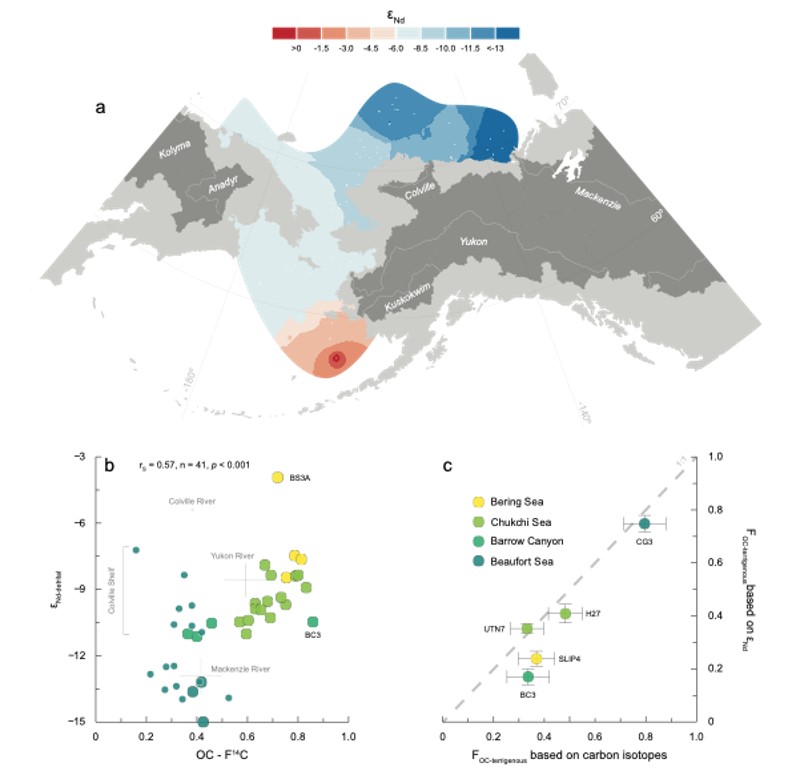Tracing sediment and carbon sources in the ocean
Understanding the transportation and burial of organic carbon on continental shelves is limited due to the complex interplay of biological, chemical, and physical processes involved. Organic carbon hosted on detrital mineral phases can experience prolonged transfer and storage times. Here, we integrate organic and inorganic isotopic geochemical data for surface sediments in the Western Arctic Ocean to determine the sources and transport mechanisms that affect the dispersal and persistence of organo-mineral particle associations during export and burial. Our findings reveal that neodymium and carbon isotopic data can provide complementary information that can help us to gain a deeper understanding of these processes.

a) Spatial distribution maps of detrital εNd (n = 94). White dots correspond to all available observations, including literature data and data from this study, while dark grey areas indicate major river drainage basins. b) relationship between εNd of detrital sediments and radiocarbon composition of particulate organic carbon (OC-F14C). Small dots represent literature values. c) correlation between the estimated terrigenous fraction of organic carbon using εNd of organic leachates and carbon isotopic compositions. Dashed line displays 1:1 correspondence.
Student projects
- Schwab, M.S. (2015). Coupled Organic and Inorganic Tracers of Particle Flux Processes in the North American Arctic Ocean. Master's project.
Selected publications
- Schwab, M.S. et al. (2021) external pageGeochim. Cosmochim. Actacall_made 315, 101-126.
